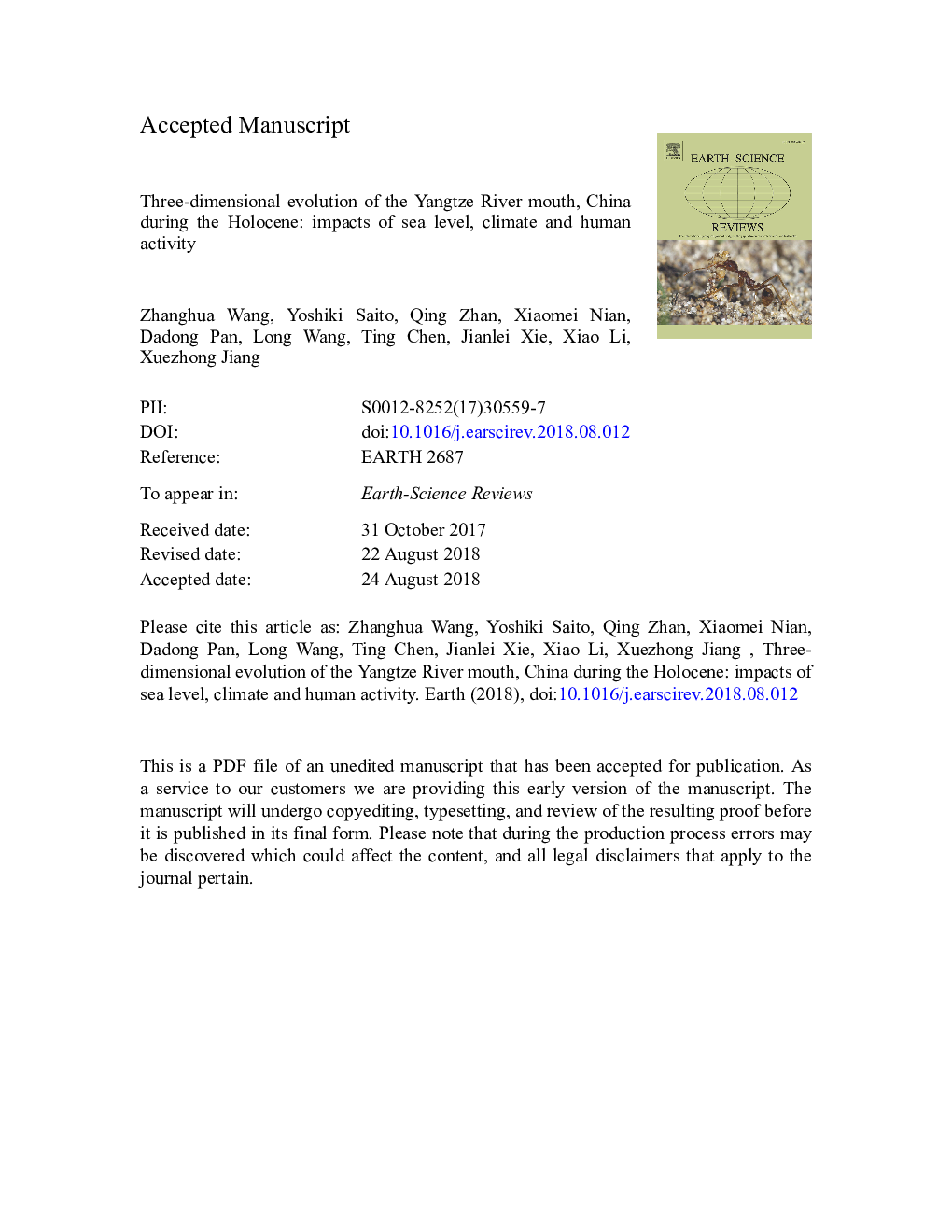| کد مقاله | کد نشریه | سال انتشار | مقاله انگلیسی | نسخه تمام متن |
|---|---|---|---|---|
| 10120721 | 1639918 | 2018 | 72 صفحه PDF | دانلود رایگان |
عنوان انگلیسی مقاله ISI
Three-dimensional evolution of the Yangtze River mouth, China during the Holocene: impacts of sea level, climate and human activity
ترجمه فارسی عنوان
تکامل سه بعدی دهانه رودخانه یانگ تسه، چین در طول هولوسن: تاثیرات سطح دریا، آب و هوا و فعالیت های انسانی
دانلود مقاله + سفارش ترجمه
دانلود مقاله ISI انگلیسی
رایگان برای ایرانیان
کلمات کلیدی
تکامل مورفودینامیکی، فرسایش ساحلی، توپوگرافی رید و تیلر، میزان تجمع رسوب، تغییر سیستم رژیم،
موضوعات مرتبط
مهندسی و علوم پایه
علوم زمین و سیارات
زمین شناسی
چکیده انگلیسی
The Yangtze (Changjiang) mega-delta, China, has a high risk of coastal erosion owing to the recent high rate of relative sea-level rise and reduced sediment supply. The study of the Holocene evolution of the delta can provide information about its response to rapid sea-level rise and changes in sediment supply caused by climate or human activity, although this has yet to be fully explored because of the lack of integrated studies using age-constrained sedimentary records. Here we document stratigraphic architecture and morphological changes over the last 11,700â¯years and estimate the amount of sediment trapped in the delta region on a millennial scale using a dataset of 344 sediment cores, 658 radiocarbon and 28 optically stimulated luminescence (OSL) ages (of which we obtained 64 cores, 345 radiocarbon and 28 OSL ages, and the others we sourced from the literature). Using this dataset we present the temporal and spatial morphodynamic evolution of the entire Yangtze River mouth from its early Holocene transgressive estuary to a mid- to late-Holocene regressive delta, making it possible to produce a quantitative and sequential analysis of sediment deposition. A destructive phase of the river mouth region was identified at 10 to 8â¯cal. kyr BP, including significant coastal erosion of tidal flats and troughs within the estuary and of tidal ridge-and-trough topography offshore; these resulted from the reshaping of the river mouth morphology caused by rapid sea-level rise at that time. As a result, the rate of sediment trapping at the river mouth declined from an average of 224 Mt yrâ1 at 11.7-10â¯cal. kyr BP to 137 Mt yrâ1 between 10 and 8â¯cal. kyr BP. Since delta initiation 8000â¯years ago, a retreat of the subaqueous delta occurred and the sediment trapping rate declined from 151 Mt yrâ1 at 8-6â¯cal. kyr BP to 99-113 Mt yrâ1 between 6 and 2â¯cal. kyr BP, caused by the reduction in sediment supply linked to summer monsoon weakening ~6000â¯years ago. In the last 2000â¯years the sediment trapping rate has increased to 162 Mt yrâ1 due to intensified human activity. The present-day level of sedimentation in delta (49 Mt yrâ1 in 2003-2011), after the completion of the Three Gorges Dam, is far lower than the 'natural' range in the Holocene. We thus infer a potential for system regime shift in terms of coastal erosion and a transition to a new equilibrium in delta morphology in the near future.
ناشر
Database: Elsevier - ScienceDirect (ساینس دایرکت)
Journal: Earth-Science Reviews - Volume 185, October 2018, Pages 938-955
Journal: Earth-Science Reviews - Volume 185, October 2018, Pages 938-955
نویسندگان
Zhanghua Wang, Yoshiki Saito, Qing Zhan, Xiaomei Nian, Dadong Pan, Long Wang, Ting Chen, Jianlei Xie, Xiao Li, Xuezhong Jiang,
